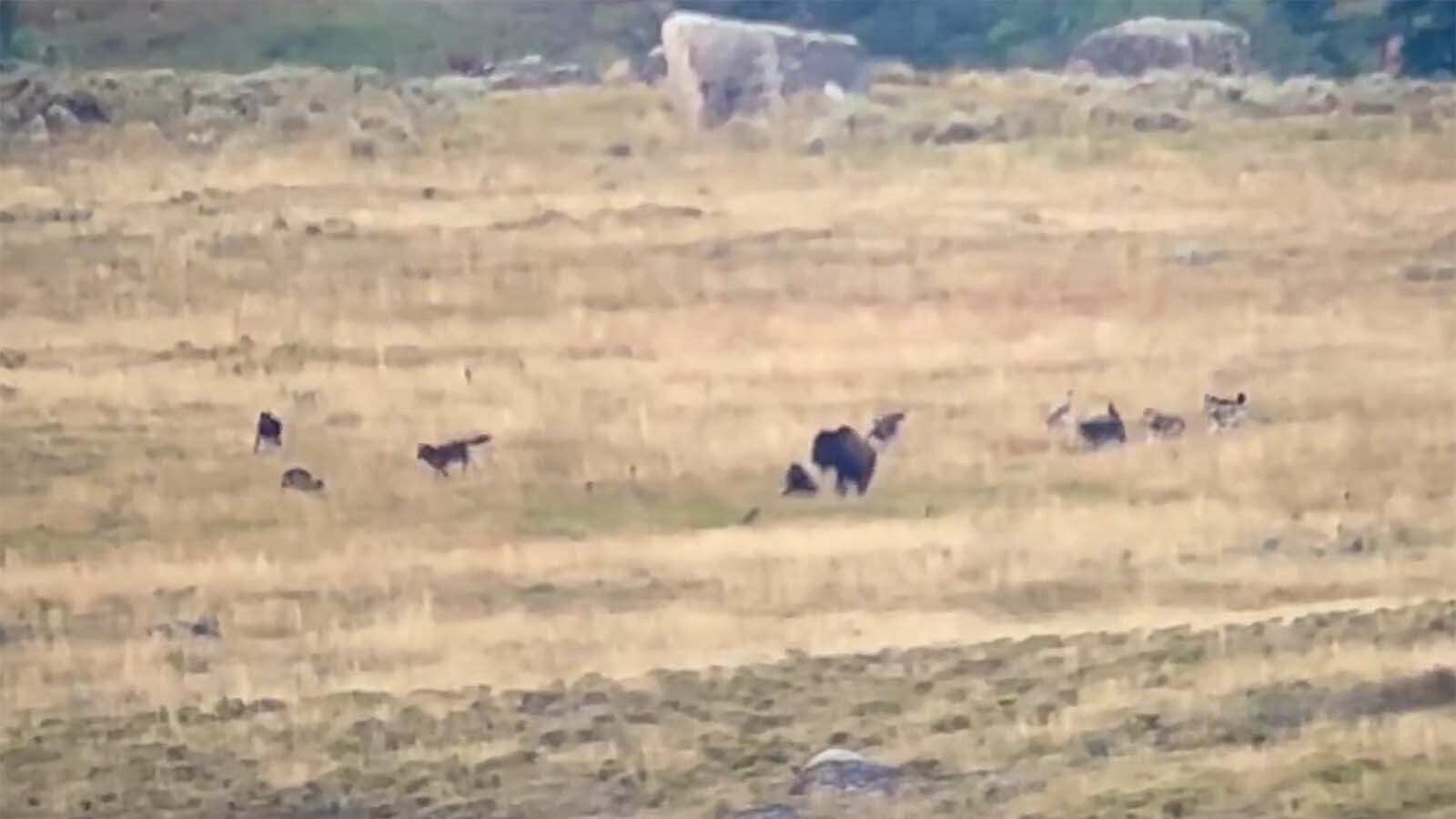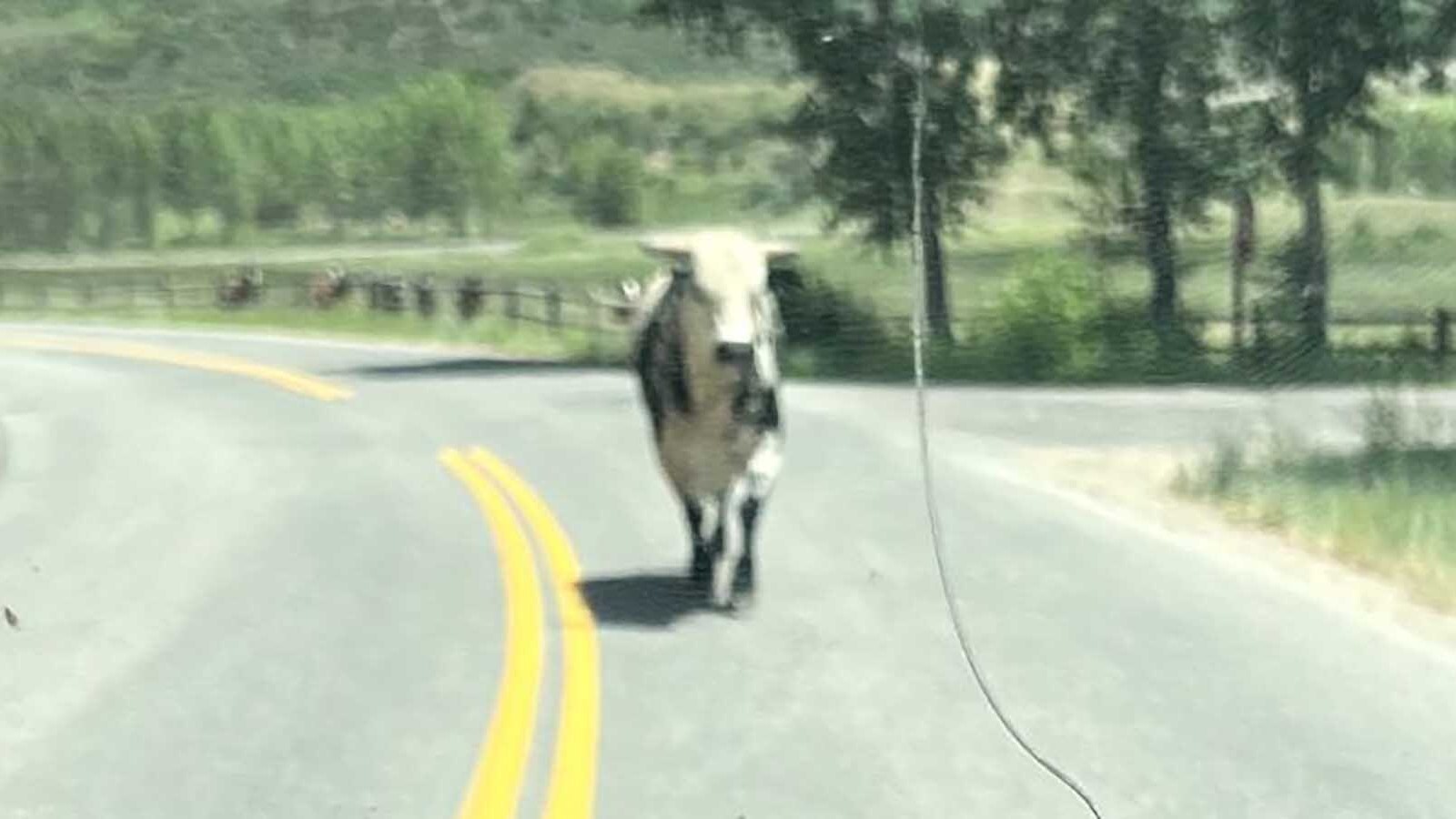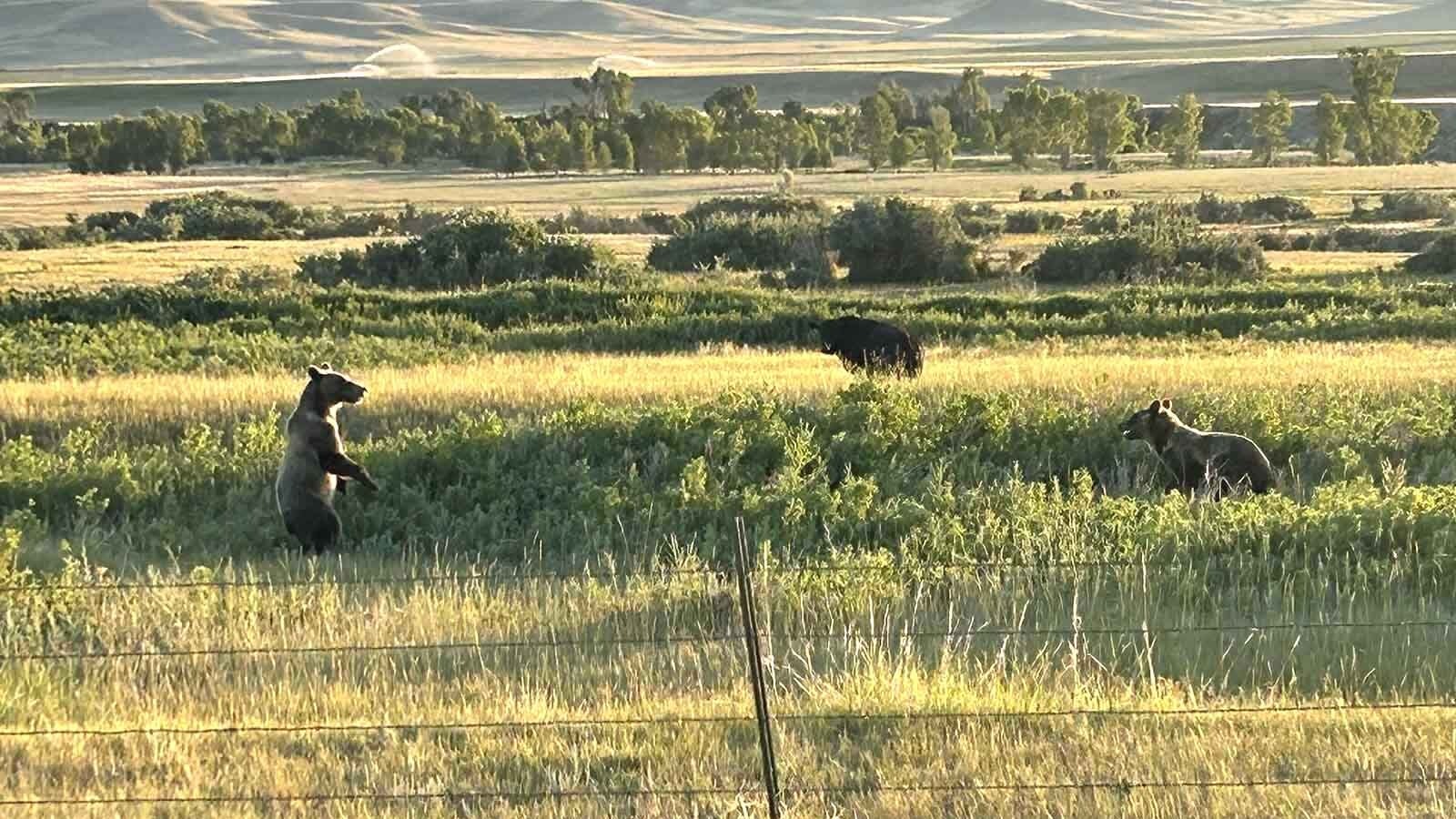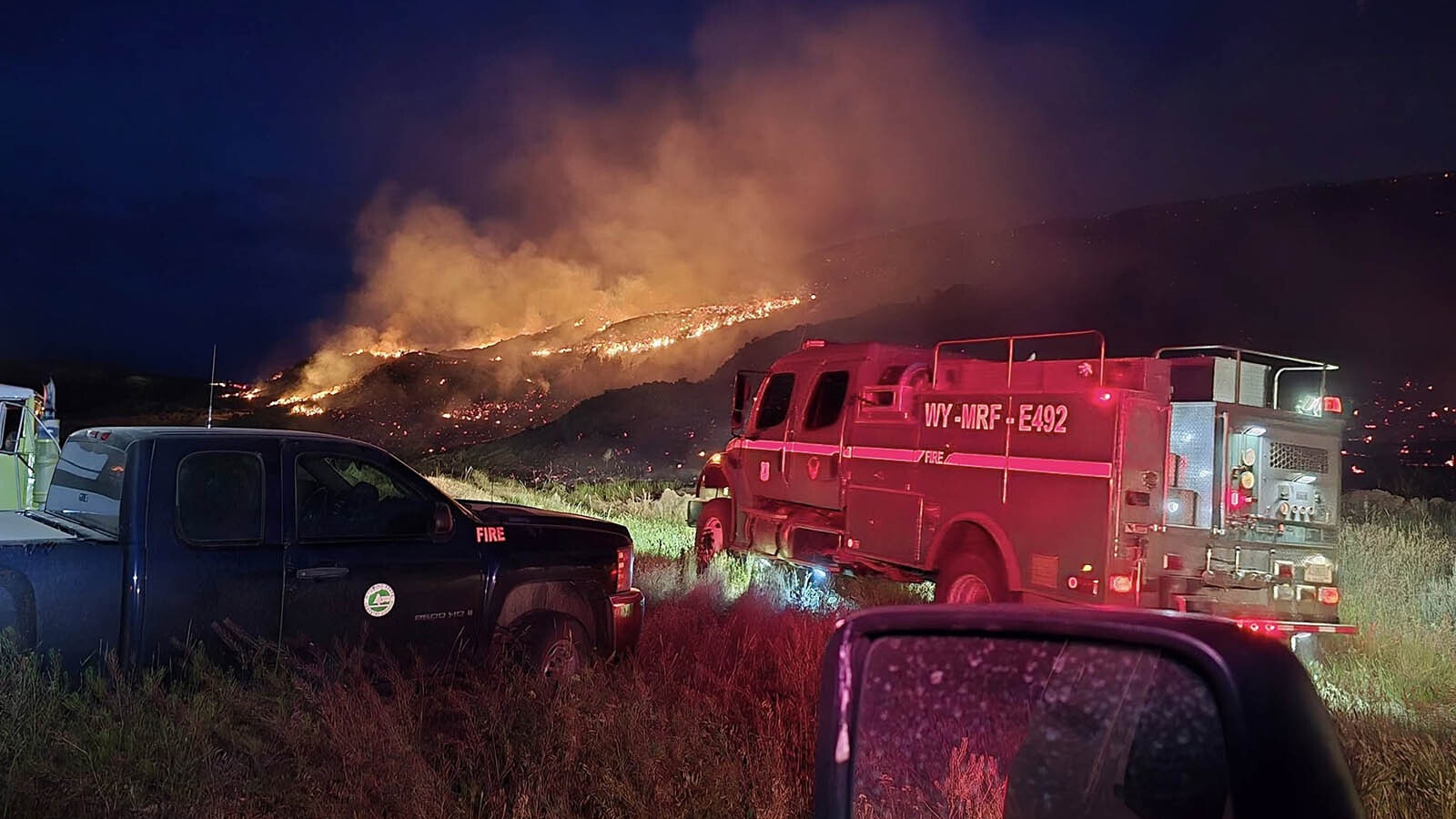A Yellowstone wolf pack that’s used to dining on elk tried, and failed, in a rare attempt to up their menu to bison this week.
“Those wolves were probably thinking, ‘Here’s our chance. We can eat big.’ And they took the chance, but it didn’t work out,” retired federal ecologist Chuck Neal of Cody told Cowboy State Daily on Friday.
He was referring to a video posted online Thursday by wildlife photographer Brian Neumann, which shows the Junction Butte wolf pack trying to cut a bison off from its herd in Yellowstone’s Lamar Valley.
‘He Recognized What The Game Was’
The Junction Butte pack doesn’t usually go after bison, Neal said. Those wolves are known to primarily target elk.
“An elk is much easier to take down than a huge bison,” he said.
But after watching the video, he said he thinks that the lone bison appeared to be injured, which is probably why the Junction Butte pack decided to go for it.
“I think that bison has a sore leg. It seems to be favoring one of its legs, and wolves are very good at detecting things like that,” he said.
At the beginning of the video, the wolves start moving in on the bison, which looks back in apparent defiance with its tail raised. Then the race is on as the wolves close in and start trying to surround the bison as it frantically tries to make its way back to the herd.
The wolves were using usual hunting tactics, trying to surround and cut off the bison, while a few of the bigger, bolder members of the pack snapped at its back legs, trying to hamstring it.
“That’s the game, that’s how wolves take down prey,” Neal said.
Meanwhile, the bison apparently realized what was at stake and knew the only chance of escape was getting back to the group.
“He recognized what the game was too,” Neal said. “He was able to get back to the herd. And once he got back and the herd bunched up, it was all over.”
He was refereeing to latter part of the video. It shows the bison rejoining its companions — and then the burly animals bunch up together with their massive heads and horns facing outward, forming a protective wall.
Could Have Been A Gruesome Scene
Had things gone a little differently, the folks watching along the roadside from where the video was taken would have witnessed one of nature’s harshest routines unfold, Neal said.
When taking down large animals, a pack of wolves cripples it by biting through the large tendons on their unfortunate prey’s rear legs.
And once it’s down, they start eating their prey alive, he said.
“They’ll start eating into the belly section and pulling out the entrails while the animal is still alive,” Neal said. “Most canines kill their prey by eating it.”
A pack of wolves eviscerating a bison alive might have been a bit much for some roadside tourists, he said.
“It probably would have tested their commitment to the balance of nature if they saw wolves devouring a living animal,” he said.
‘Bison Specialists’
While the Junction Butte pack rarely try to take down bison, another pack of Yellowstone wolves are “bison specialists,” Neal added.
Those are the Mollie’s pack wolves in the Pelican Valley, he said.
Because the Pelican Valley gets some of Yellowstone’s heaviest snowfall, the Mollie’s pack has over the years mastered the art of driving bison into deep snow during the winter.
The heavy bison, with their hooved feet, will sink in. Whereas the wolves, with their huge paws, can run along the surface of crusted snow and have the bison at their mercy, Neal said.
The Mollie’s pack wolves eat big, so they are big, he added.
“They are the park’s bison specialists, and they produce some of the biggest wolves in the park. Some of the males can reach 140-150 pounds,” he said. “The biggest wolves in the pack are the ones who do the killing, but that also means that they’re the ones who are most likely to get hurt.”
Mark Heinz can be reached at mark@cowboystatedaily.com.





